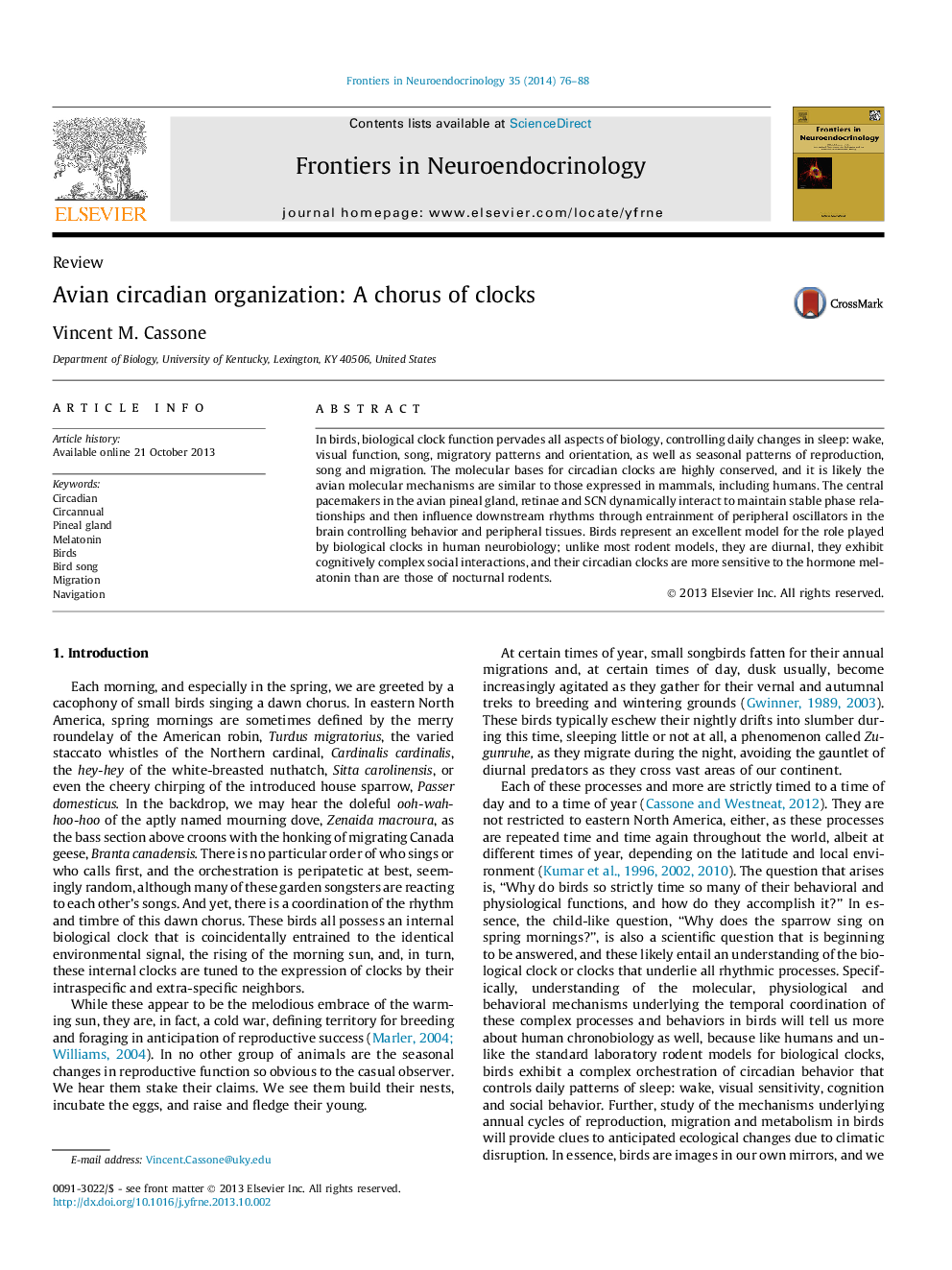| Article ID | Journal | Published Year | Pages | File Type |
|---|---|---|---|---|
| 2799366 | Frontiers in Neuroendocrinology | 2014 | 13 Pages |
•Biological clocks are fundamental to biological processes in birds, regulating many behaviors.•The formal properties and molecular components of clocks are highly conserved.•The core components of the clock interact to ensure stable phase relationships among them.•The outputs of this system entrain downstream oscillators and processes.•These processes include sleep, bird song, vision, migration and reproduction.
In birds, biological clock function pervades all aspects of biology, controlling daily changes in sleep: wake, visual function, song, migratory patterns and orientation, as well as seasonal patterns of reproduction, song and migration. The molecular bases for circadian clocks are highly conserved, and it is likely the avian molecular mechanisms are similar to those expressed in mammals, including humans. The central pacemakers in the avian pineal gland, retinae and SCN dynamically interact to maintain stable phase relationships and then influence downstream rhythms through entrainment of peripheral oscillators in the brain controlling behavior and peripheral tissues. Birds represent an excellent model for the role played by biological clocks in human neurobiology; unlike most rodent models, they are diurnal, they exhibit cognitively complex social interactions, and their circadian clocks are more sensitive to the hormone melatonin than are those of nocturnal rodents.
Graphical abstractFigure optionsDownload full-size imageDownload as PowerPoint slide
